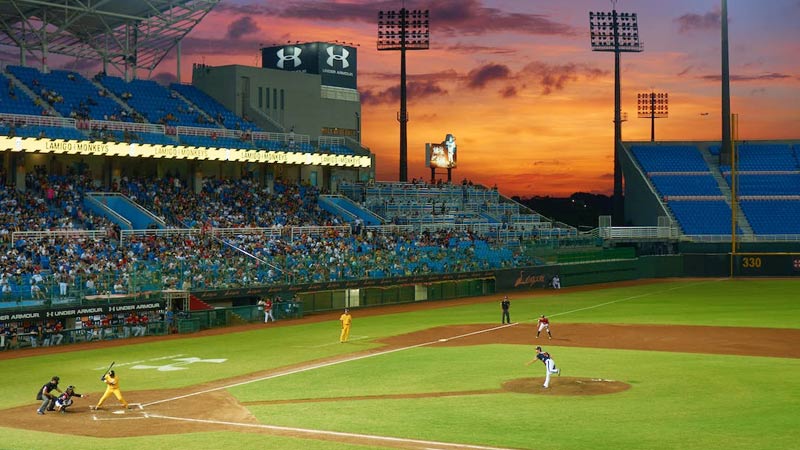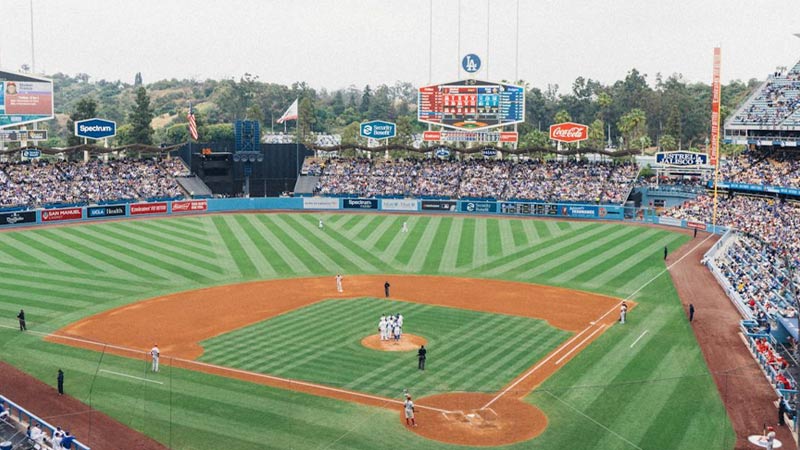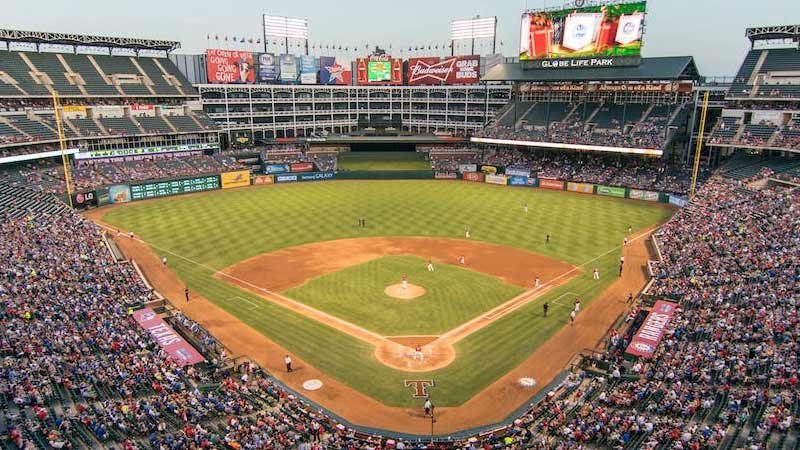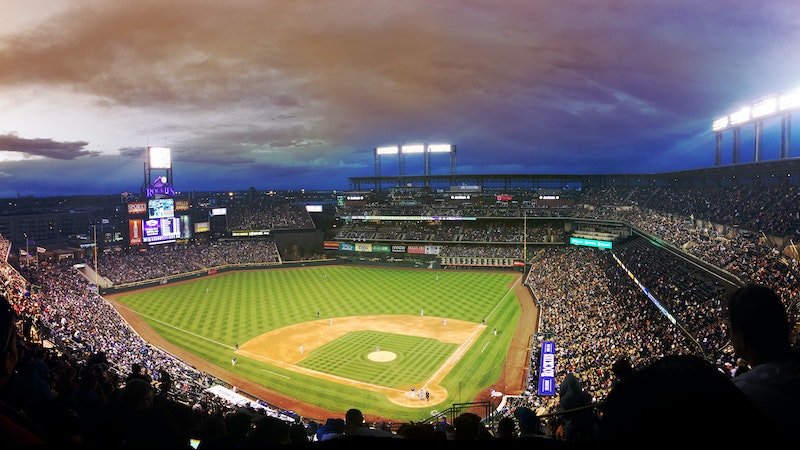Baseball, often called America’s pastime, is a sport rich in tradition and iconic elements.
From the crack of the bat to the roar of the crowd, baseball is a game filled with unique features, one of which is its precisely measured playing field.
The baseball infield, with its bases strategically placed, forms the heart of the game. But have you ever wondered just how many square feet in a baseball infield?
In this blog post, we embark on a journey to uncover the exact dimensions of a baseball infield.
We’ll explore the standard measurements, from the base paths to the pitcher’s mound, and provide you with a clear understanding of the square footage that defines the core of the game.
Whether you’re a baseball enthusiast, a curious mind, or just looking to settle a debate about the size of the infield, this exploration of America’s favorite diamond is sure to provide the answers you seek. Stay sharp.
How Many Square Feet in a Baseball Infield?
A standard baseball infield consists of four bases arranged in a square, each 90 feet apart from the adjacent bases. The area enclosed by these bases forms a diamond shape.
To calculate the square footage of the infield, you can use the formula for the area of a square or a rectangle, which is length multiplied by width.
In this case, the length and width of the infield can be considered as the distance between the bases, which is 90 feet. Therefore, the baseball infield square footage is:
90 feet (length) × 90 feet (width) = 8,100 square feet.
So, a typical baseball infield covers 8,100 square feet.
The Standard Dimensions of a Baseball Infield

The standard dimensions of a baseball infield, as defined by Major League Baseball (MLB) and most other professional and amateur baseball organizations, include:
Base Paths
The distance between each base, including home plate, first base, second base, and third base, is set at 90 feet.
This measurement creates the fundamental structure of the infield, forming a perfect square when connecting the bases.
Base Shapes
Each base is a 15-inch square that is positioned with one corner pointing outward from the infield and the other three corners inside the diamond.
This arrangement ensures that base runners touch the corners of the bases while advancing around the infield.
Pitcher’s Mound
The pitcher’s mound is situated at the center of the infield, 60 feet and 6 inches (or 60.5 feet) from home plate. The mound is raised above the rest of the infield and has a circular rubber pitcher’s plate at its center.
Basepaths and Infield Grass
The basepaths, including the pitcher’s mound, are typically covered with infield grass, while the area between the bases and the mound may have a clay or dirt surface.
The size and shape of the infield grass and dirt areas can vary slightly from one stadium or field to another, but they conform to specific guidelines regarding overall dimensions.
These standardized dimensions help maintain consistency in the game of baseball, ensuring that all fields and stadiums provide a level playing field for teams and players.
Calculating the Baseball Field Square Feet
Calculating the square footage of a baseball field involves considering the dimensions of both the infield and the outfield.
Here are the steps to calculate the total square footage of baseball field:
Infield Calculation

- Determine the square footage of the infield by calculating the area within the diamond formed by the bases. To do this, multiply the length and width of the square area enclosed by the bases.
In a standard baseball infield, the bases are 90 feet apart, resulting in an area of 8,100 square feet.
- Next, consider the pitcher’s mound, which is typically a 24-foot diameter circle.
To calculate the area of the pitcher’s mound, use the formula for the area of a circle: πr² (where r is the radius, which is half the diameter). The area of the pitcher’s mound is approximately 1,809 square feet.
Outfield Calculation
The outfield dimensions can vary from one baseball field to another. The outfield generally extends beyond the infield to create a larger playing area.
To calculate the square footage of the outfield, you’ll need to know the distance from the home plate to the outfield fence (the “warning track”).
Multiply the length and width of this area to determine the outfield square footage.
Total Field Square Footage
Add the square footage of the infield and outfield to obtain the total square footage of the baseball field.
Keep in mind that the dimensions can vary, especially in different levels of baseball (e.g., Little League, high school, or professional fields), so be sure to use the specific measurements for the field you’re interested in calculating.
Calculating the square footage of a baseball field involves considering the infield, the pitcher’s mound, and the outfield dimensions.
Variations in Inside Baseball Field Square Footage
The square footage of an inside baseball field can vary due to several factors, including the level of play, stadium design, and even historical differences.
Here are some variations to consider:
Level of Play
- Little League and youth baseball fields typically have smaller dimensions than professional baseball fields. In Little League, for example, the base paths are usually shorter (e.g., 60 feet), which significantly reduces the infield square footage.
- College and high school baseball fields may also have varying dimensions, which can impact the overall square footage. These differences are often influenced by factors like the age and skill level of the players.
Stadium Design

- Professional baseball stadiums can vary in size based on architectural and design considerations.
While there are established guidelines for infield dimensions, the outfield dimensions and outfield wall distances can vary from one stadium to another. For example, the outfield fence distance can vary, affecting the square footage of the outfield. - The design of the seating area, dugouts, bullpens, and other features within the stadium can also influence the available square footage within the ballpark.
Historical Variations
- Historically, baseball fields did not always adhere to the standardized dimensions we see today. In the early days of baseball, there were considerable variations in field sizes, with some fields being irregularly shaped or having shorter base paths.
- Some older or historic ballparks that are still in use may have unique dimensions due to constraints imposed by their locations. Examples include the short right-field porch in Yankee Stadium or the quirky outfield dimensions of Fenway Park in Boston.
Purpose and Use
Baseball fields are not solely used for professional games. They are often used for practices, youth leagues, and other events, leading to modifications in dimensions and layouts.
In some cases, multipurpose fields may have reduced square footage when set up for other sports or events.
Variations in inside baseball field square footage can arise from differences in the level of play, stadium design, historical factors, and the purposes for which the field is used.
How Big is a Baseball Field?
A standard baseball field is a well-defined space with specific dimensions, and its size can be described in several key aspects:
Infield Dimensions
The infield of a baseball field forms the central playing area and includes the diamond-shaped region enclosed by the bases: home plate, first base, second base, and third base.
The bases are positioned 90 feet apart from each other, creating a square with sides of 90 feet each. This infield square measures 8,100 square feet in total.
Pitcher’s Mound
The pitcher’s mound is situated at the center of the infield and is raised above the rest of the playing surface.
It is a circular area with a 24-foot diameter. The rubber pitcher’s plate, where the pitcher delivers the ball, is located at the center of the mound.
Outfield Dimensions
The outfield is the portion of the baseball field beyond the infield and includes the grass or turf-covered area where outfielders patrol. The dimensions of the outfield can vary between different stadiums and levels of play.
On professional baseball fields, the distance from home plate to the outfield fence or wall, known as the outfield fence distance, typically ranges from 330 to 400 feet.
This varies based on the stadium design, with some fields having symmetrical outfield dimensions, while others may have unique shapes due to architectural constraints or historical reasons.
Total Field Size
The total square footage of a baseball field depends on the dimensions of the infield and the outfield.
For a professional-level field with standard infield dimensions and an outfield fence distance of around 400 feet, the total playing field can span approximately 2.5 to 3 acres.
The size of a baseball field is defined by the infield dimensions, the pitcher’s mound, and the outfield dimensions.
The exact measurements can vary depending on the level of play and the specific design of the stadium or field
FAQs
What is the square footage of the baseball infield?
The square footage of a baseball infield typically varies based on the level of play. In Major League Baseball, the infield, including the pitcher’s mound and bases, covers approximately 6,776 square feet.
How many square feet is a baseball field?
Answer 2: A full baseball field, which includes the infield and outfield, can span anywhere from 1.5 to 2.5 acres or 65,340 to 108,900 square feet. The exact dimensions may differ based on the league and field specifications.
How many square feet is a high school baseball field?
Answer 3: High school baseball fields can vary in size, but they typically range from 90 to 120 feet between bases, with an outfield spanning around 300 to 400 feet. This equates to an approximate square footage of 96,000 to 144,000 square feet for the entire field.
What is the number of square footage of a baseball field?
The square footage of a standard baseball field, including the infield and outfield, usually falls within the range of 65,340 to 108,900 square feet.
This area can fluctuate based on the specific field dimensions, such as outfield fence distances.
How does the square footage of a baseball field compare to other sports fields?
Baseball fields differ in size from other sports fields. For example, a standard American football field measures 57,600 square feet, while a soccer field can range from 87,120 to 130,680 square feet, highlighting the unique dimensions of baseball fields in the world of sports.
Wrapping Up
Baseball’s infield, with its precise measurements and unique characteristics, is central to the sport’s allure.
As we conclude our exploration, we’ve learned that a standard baseball infield consists of four bases forming a 90-foot square, totaling 8,100 square feet.
The pitcher’s mound, elevated and central to the action, adds an extra 1,809 square feet to the equation.
Understanding the square footage of a baseball infield provides a deeper appreciation for the game’s precision and strategy.
Whether you’re a player, a fan, or someone seeking to settle a friendly argument about the size of the infield, this knowledge enriches your connection to America’s beloved pastime.
So next time you’re at the ballpark or watching a game, you’ll have a newfound appreciation for the intricacies that make baseball a timeless and cherished sport, rooted in tradition and defined by its carefully measured playing field.







